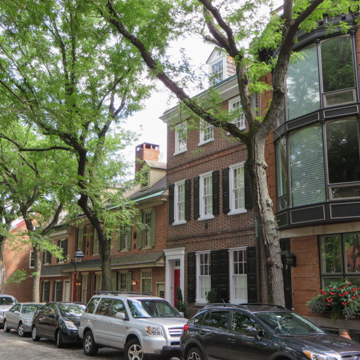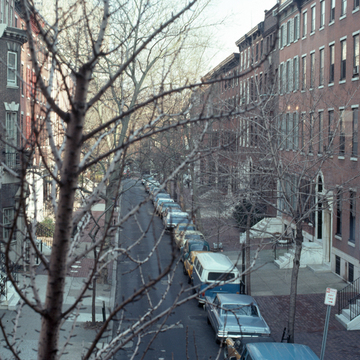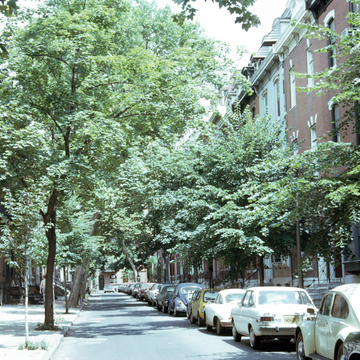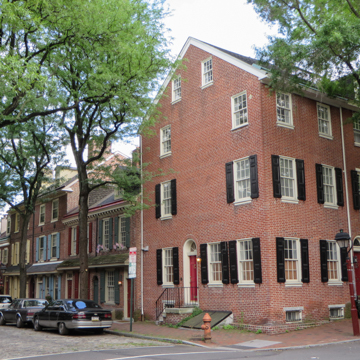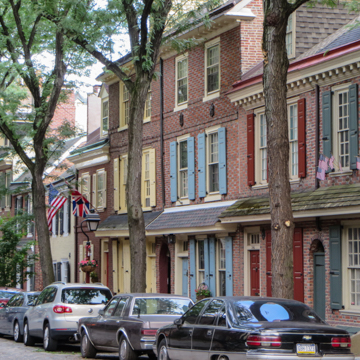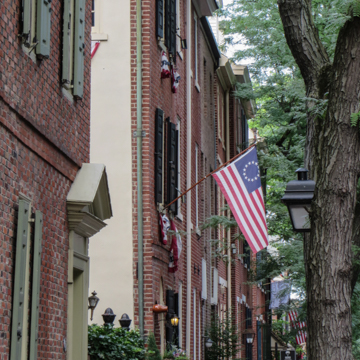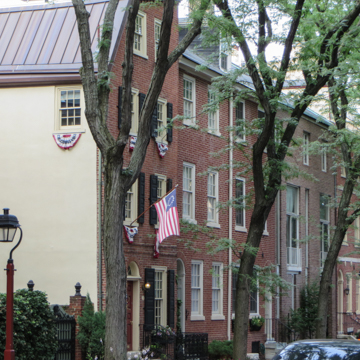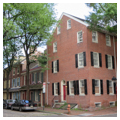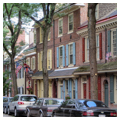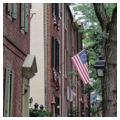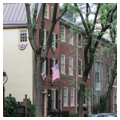The best-preserved block of Society Hill conveys the character of the Revolutionary city in the multiple choices of its housing, modesty of scale, and urban character. Alexander Barclay, comptroller of the port of Philadelphia, lived in the tiny house built c. 1750 by Samuel Rhoads at number 227. Its side garden in the Japanese style is one of the charms of its block. The houses at 232–248 Delancey demonstrate the variety of scale and styles from the mid-eighteenth to the early nineteenth century. Behind them is Drinker's Court, a cluster of tiny “trinity,” or three-room, houses built in the 1760s behind bricklayer John Drinker's house at 241 Pine Street, a typical house of the period. Many of the houses of the region were built and owned by those in the building trades, indicating that personal capital of labor was as important as the ground rent system in supporting the growth of the city. The small alleys running north and south from Delancey—Phillip and American streets—demonstrate the further subdivision of urban space that permitted ever greater density.
You are here
200 Block of Delancey Street
If SAH Archipedia has been useful to you, please consider supporting it.
SAH Archipedia tells the story of the United States through its buildings, landscapes, and cities. This freely available resource empowers the public with authoritative knowledge that deepens their understanding and appreciation of the built environment. But the Society of Architectural Historians, which created SAH Archipedia with University of Virginia Press, needs your support to maintain the high-caliber research, writing, photography, cartography, editing, design, and programming that make SAH Archipedia a trusted online resource available to all who value the history of place, heritage tourism, and learning.



